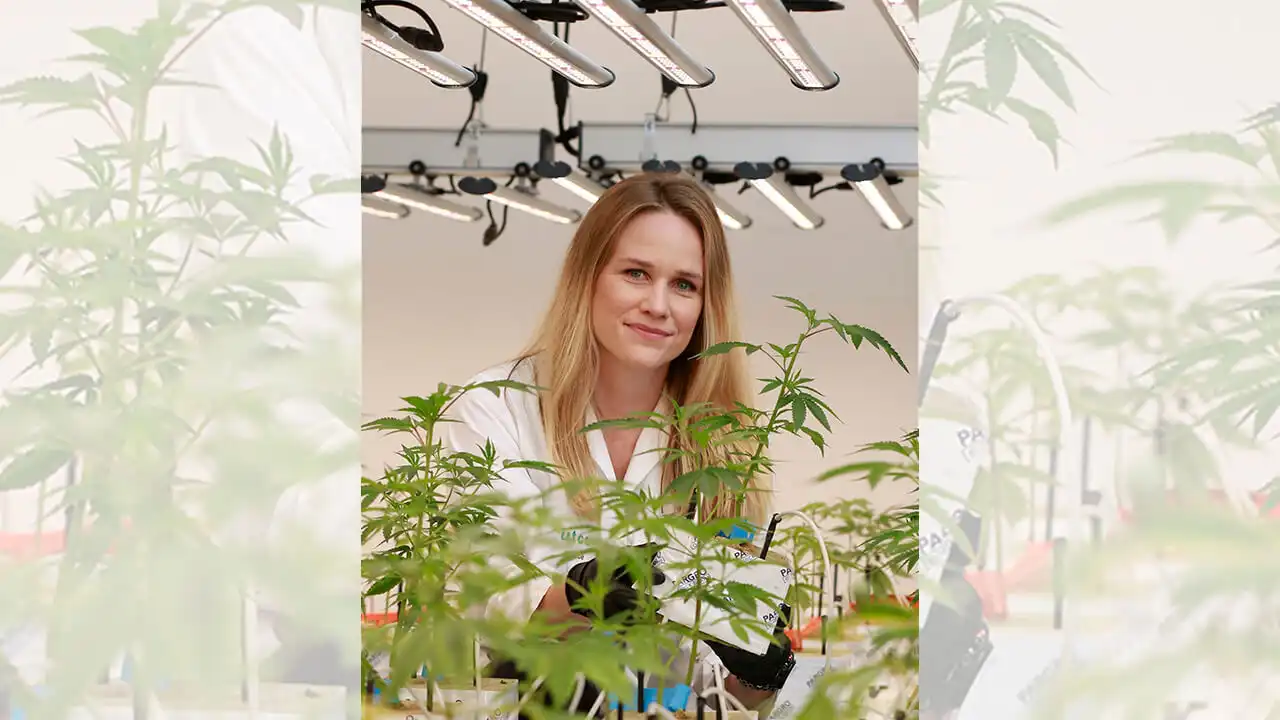Some of the most interesting cannabis cultivation research is happening in South Carolina, where neither adult-use nor medical marijuana is legal.
Instead, researcher Allison Justice, who holds a Ph.D. in plant and environmental science and is the founder of the Cannabis Research Coalition, is putting federally legal hemp under the microscope to better understand the physiology of cannabis – and how best to preserve its all-important trichomes during the drying and curing phase.
Justice shared some of her latest findings with MJBizDaily ahead of the April 1-3 Emerald Conference in San Diego, where she’ll join Maria McIntyre of BioMérieux, David Sandelman of VT Dry & Cure Technologies, Keith Saviano of Nimbus Cannabis Co. and Nicole Thais of Seven Clover in the final-day panel discussion, “Improving Post-Harvest Production to Protect Plant Integrity.”
What made you want to research cannabis cultivation?
Besides appreciating the plant and the medicinal values it has, the correlation between many ornamental plants like poinsettias and cannabis are extremely similar.
The two obvious (similarities) are that most of the reproduction is done vegetatively – same thing with poinsettias and geraniums and many of the other things that we’re working with.
With both being short-day plants, the timing and flowering is almost identical.
From that standpoint, it was very easy with my background to switch to this crop.
And with it being under prohibition for so many years, actual academic research is little to none.
From that standpoint, it’s super exciting being on the ground floor of understanding the science.
Your research is conducted on hemp. Are your findings relevant to the marijuana industry?
110%; it absolutely counts.
I would say 90% of our members are marijuana growers who are looking for the science.
If you were to look at our research as an outsider and not know that it was hemp – if you saw it and smelled it – you would think it was marijuana.
We do trials in-house, but over the past two years, we’ve sent out many of our trials to some of our grower members and had them do a similar experiment with marijuana varieties.
And every time, it’s completely applicable.
You’re presenting some of your findings in drying and curing at the Emerald Conference. What are you most excited to share with the industry?
Reshaping the way people think about drying (harvested cannabis) and how they think of the trichrome structure, which is the part we care about on the flower: understanding how it works physiologically and being able to apply that to shaping how they dry and cure.
We spent hours and hours using really high magnification and going through different drying methods to not only see the difference from an aesthetic standpoint but to get some understanding around how that trichome head works and can be manipulated.
I’ve been thinking of it as a balloon – understanding it’s not just about humidity and temperature; it’s the pressure.
What we’re seeing is the 60/60 drying set point (60 degrees Fahrenheit with 60% humidity) – though it works and produces good, fine flower – it’s not optimized for how the structure of the trichome performs.
Think about the trichome simply being a balloon or a stalk.
Watching the trichome head during drying, the cells within the stalk shrink because they’re full of water like any other plant cell.
But the trichome head itself is the center for production for cannabinoids and terpenes, and it’s not full of water. It’s full of oil.
So, really understanding that you have a balloon, and when you’re changing the pressure that is dictated from humidity and temperature – your vapor pressure – you should think about the balloon being contracted and expanding with the pressure in the environment.
As the plant itself is drying out, the cuticle on the trichome head drying out allows for cracks or ruptures to happen.
You can physically see that on the trichome head and really wrap your head around it.
If you smell the terpenes, then they’re in the air. They’re not necessarily locked in the trichome head.
Do you meet resistance to your research in the cultivation community?
People are empowered by having a screen (when they) say things to me.
If I’m having a one-on-one conversation with just about anybody, it’s educational, and we’re listening both ways.
But it seems like when I post certain things online, there are certain practices that there’s so much emotion tied to – and drying and curing is a big one.
People are straight-up mean, telling me that I don’t know what I’m talking about, not willing to have a conversation.
The 60/60 drying method works, and it does well, and that is something to be proud of. It does produce good flower.
But when you really start to dig deep and understand the plant on a physiological basis, (the method) can advance and progress.
I try to present it in that way, that it’s just continual learning for everyone.
But yeah, LinkedIn, Instagram, everywhere – certain posts just bring the worst out of people, and they get really mean.
It’s everything from, “Women shouldn’t be growing” to “You literally have no idea what you’re talking about.”
So, to be honest, I don’t post as much as I really would like to.
In addition to drying and curing, are there other projects you’re working on?
Yes, it’s called “The Science of Smokability,” and this is one we’re doing collaboratively with Marcus Roggen, Miyabe Shields, Riley Kirk and Ashley Manning.
We’re using Roggen’s joint-smoking machine to understand the nitty-gritty – in this case, with pre-rolls – because in the legacy (market), there are a lot of guesses and theories about white and black ash.
We’re looking at what’s being manipulated in drying and curing or cultivation that is presenting itself as white or black ash.
We’re going to go down a lot of rabbit holes.
We’re looking at starch-to-sugar conversions and really understanding the total carbohydrate breakdown.
Understanding minerals that are left from cultivation – the plant has to have minerals, but some can be higher and lower depending on what you’re inputting – and showing that the mineral content or the organic content can have an effect on your joint quality.
It’s going to be a couple yearslong study.
This interview has been edited for content and clarity.
Kate Robertson can be reached at kate.robertson@mjbizdaily.com.





